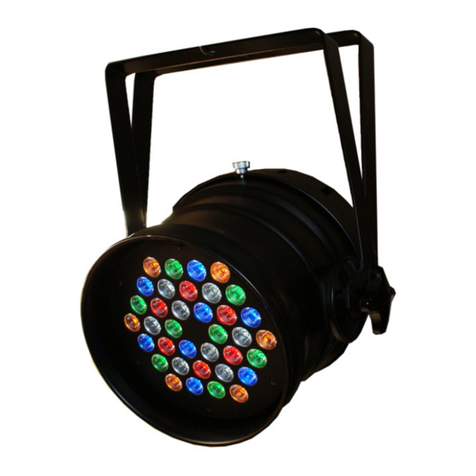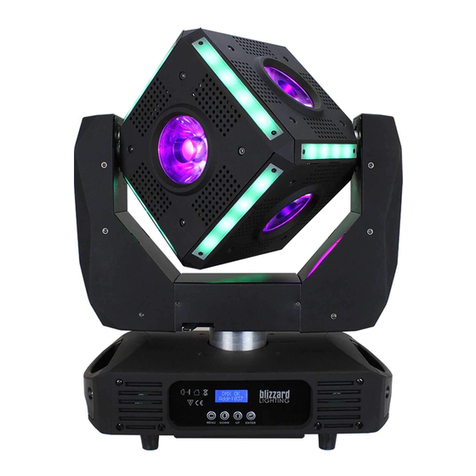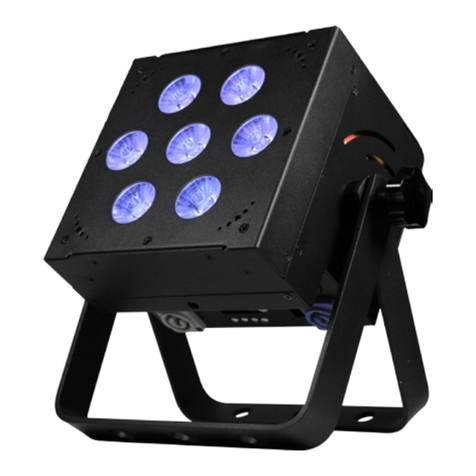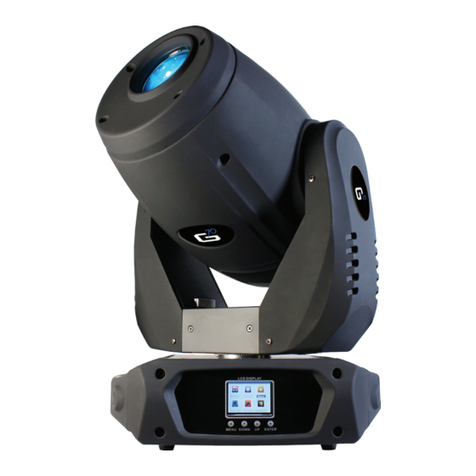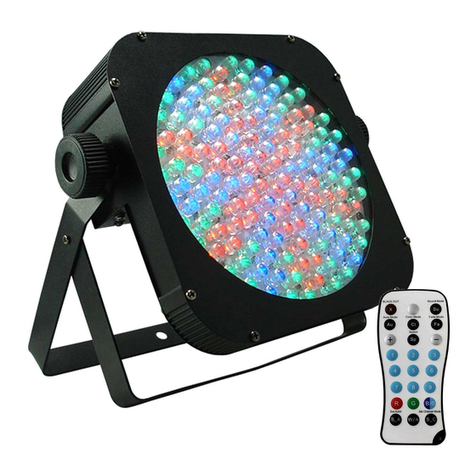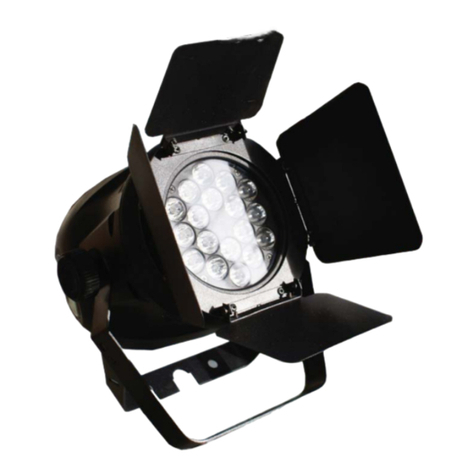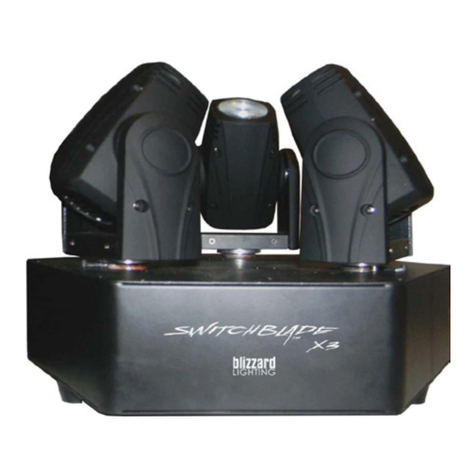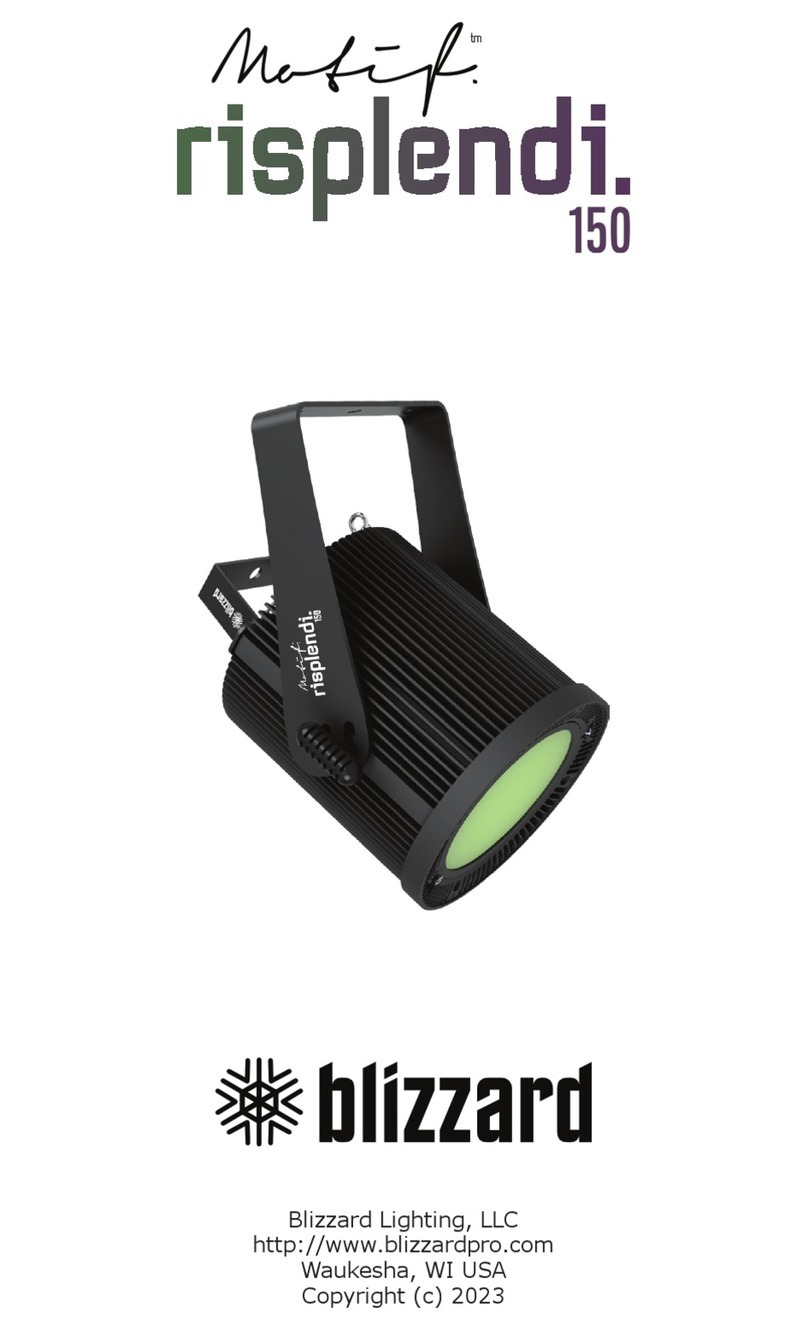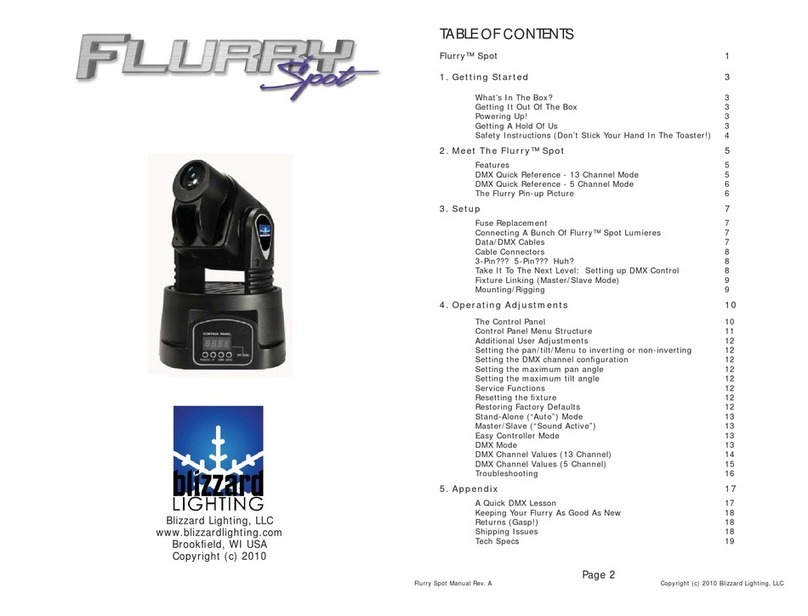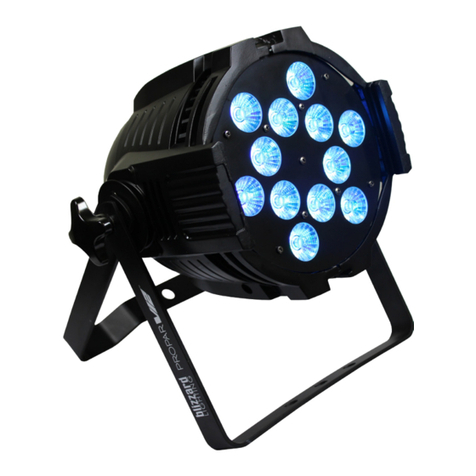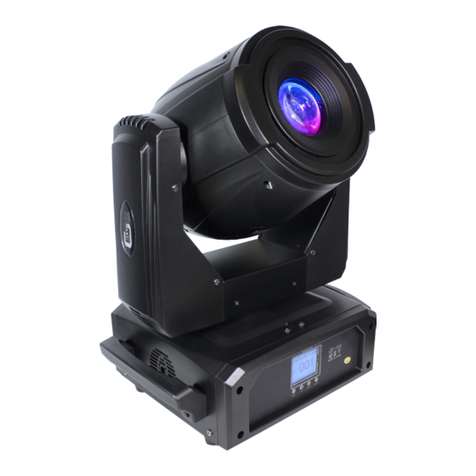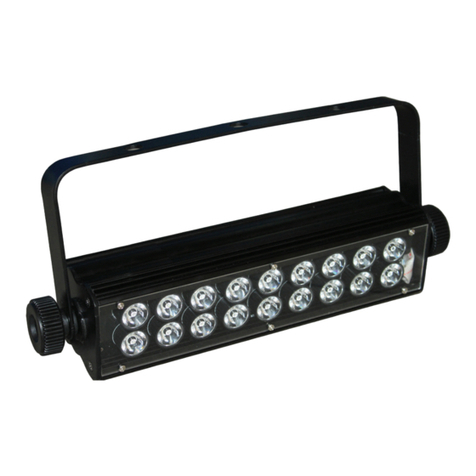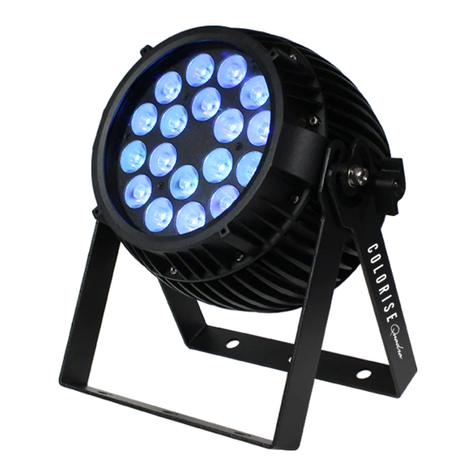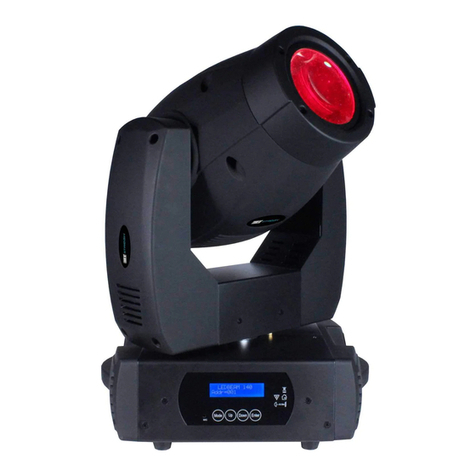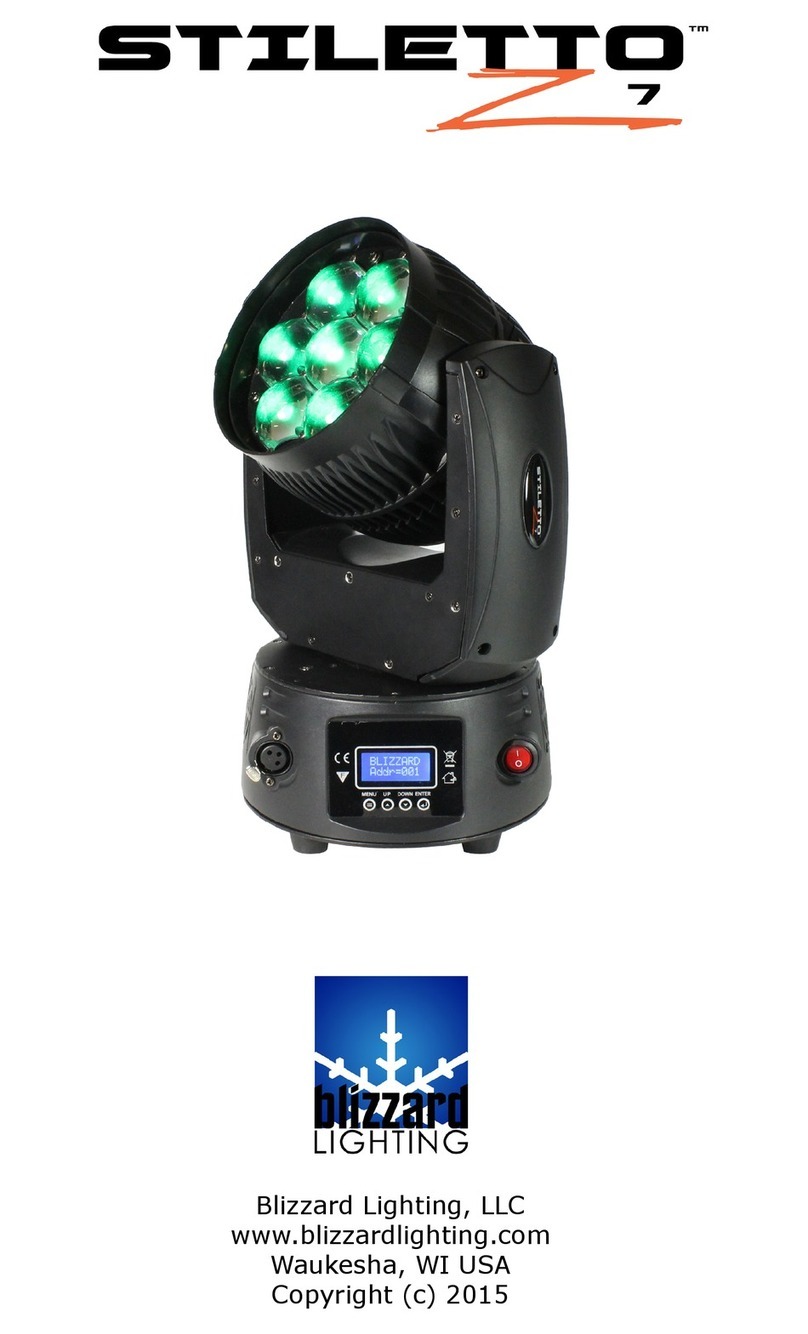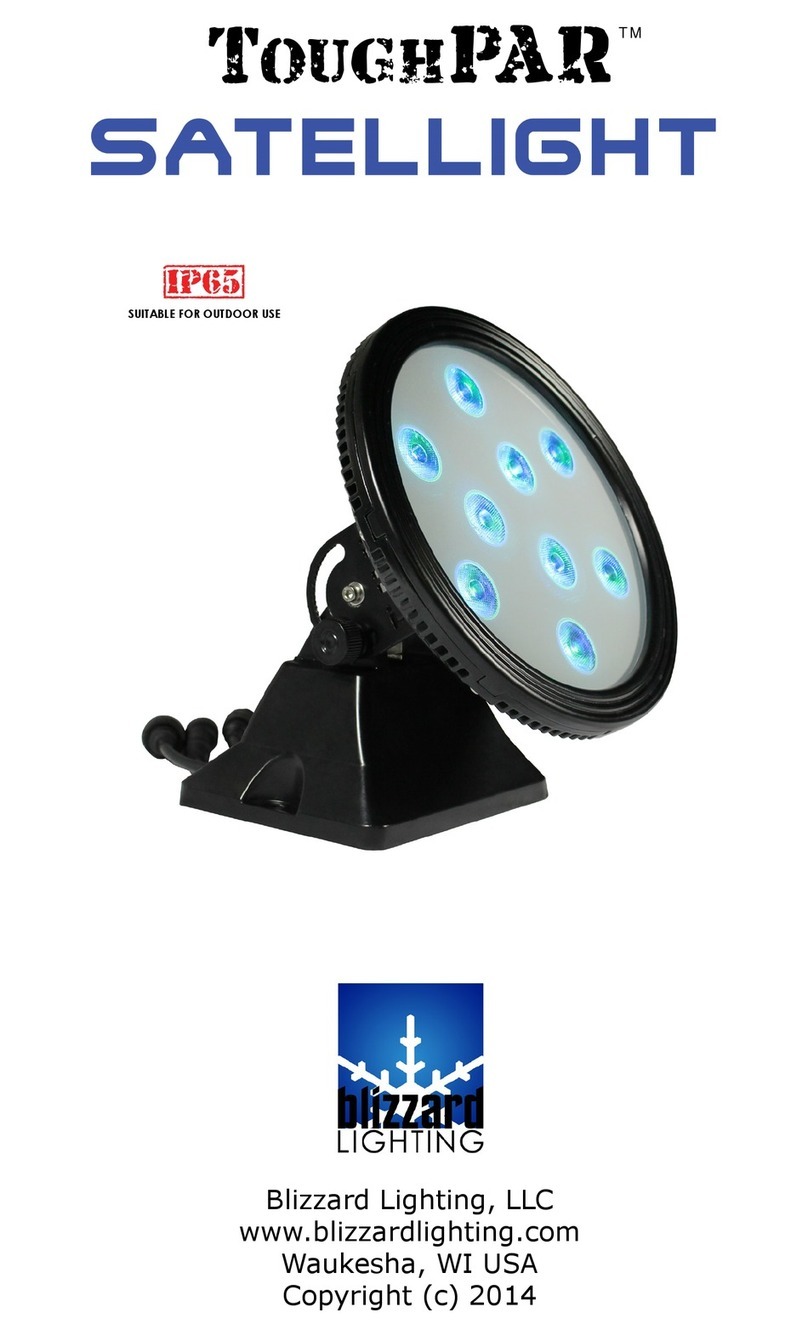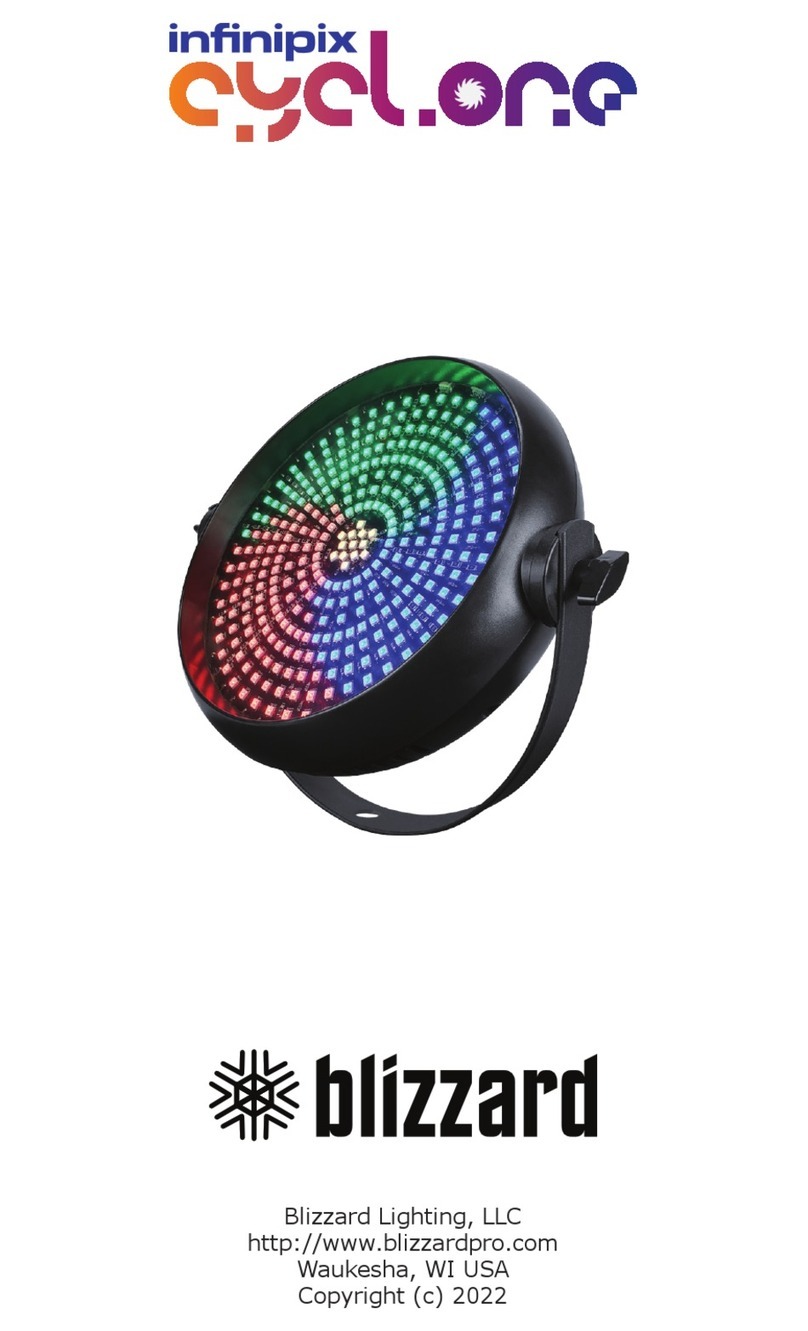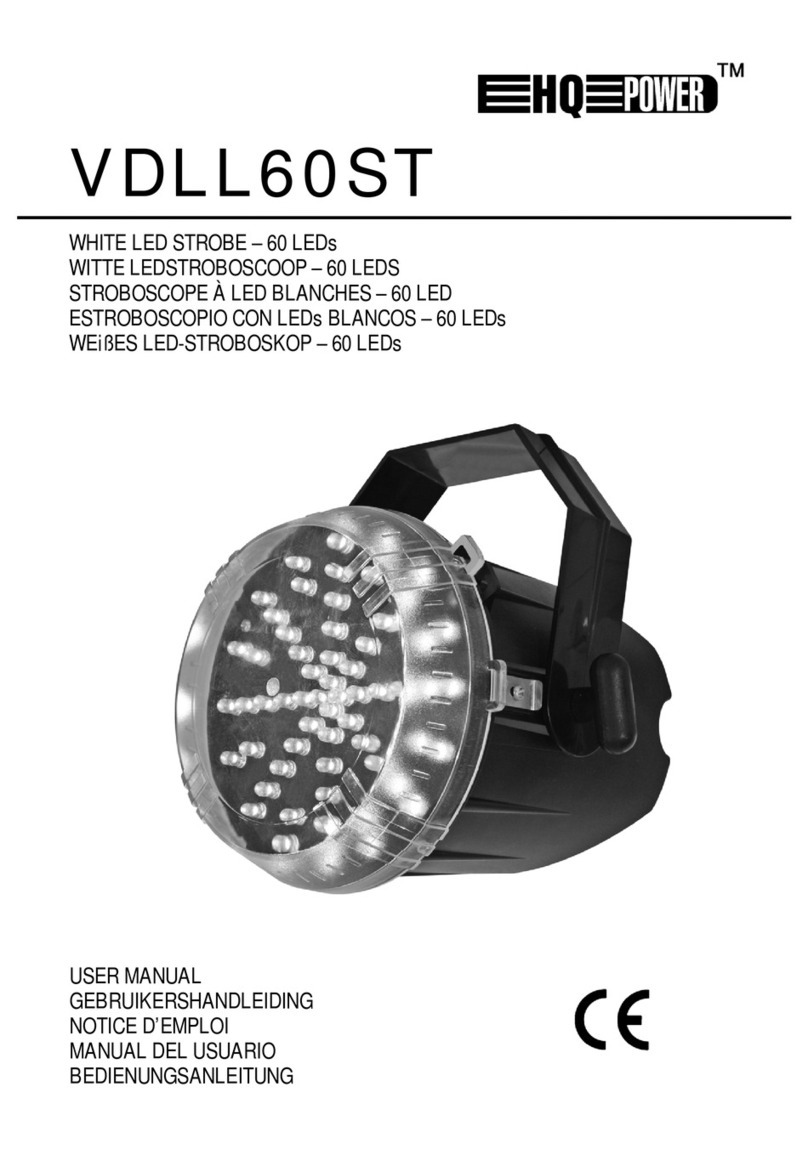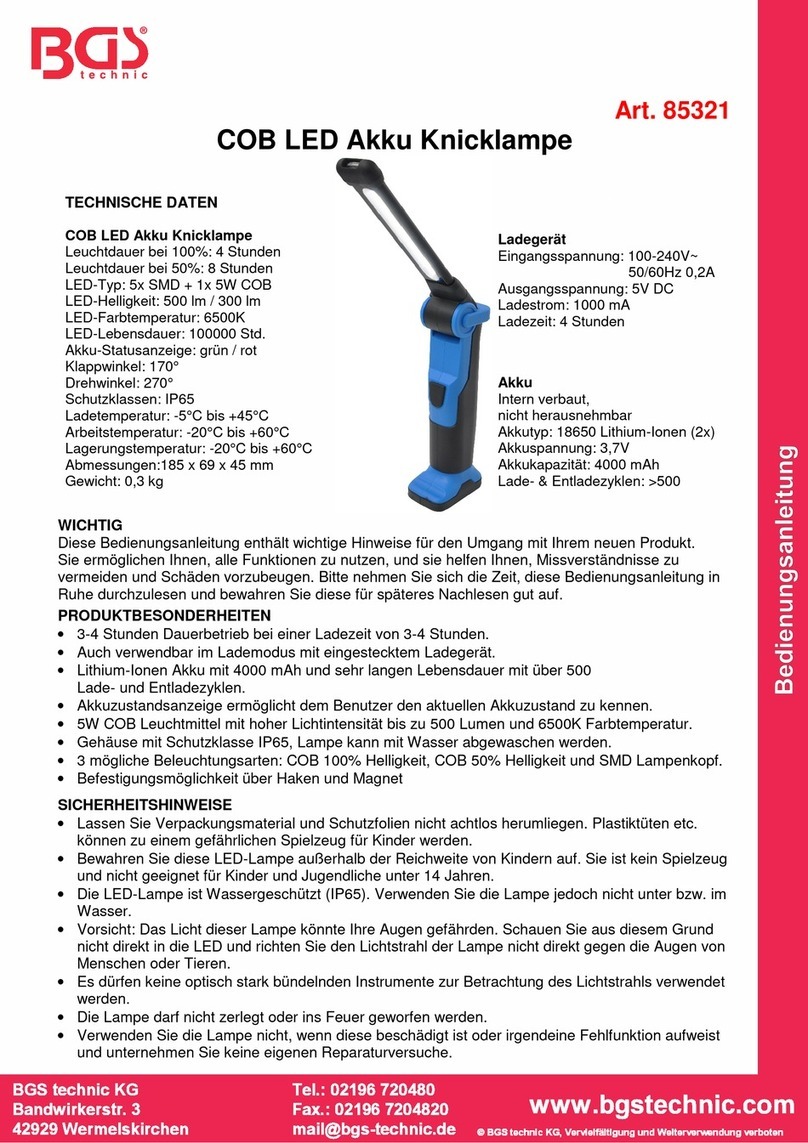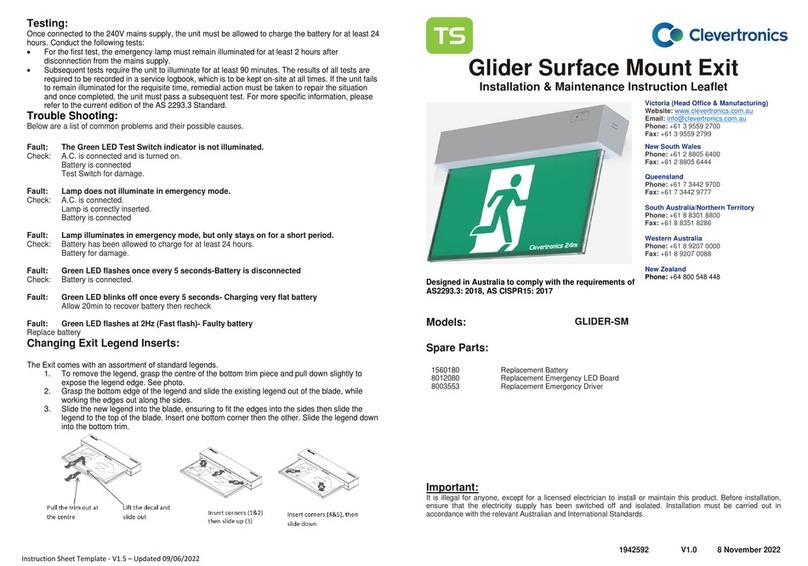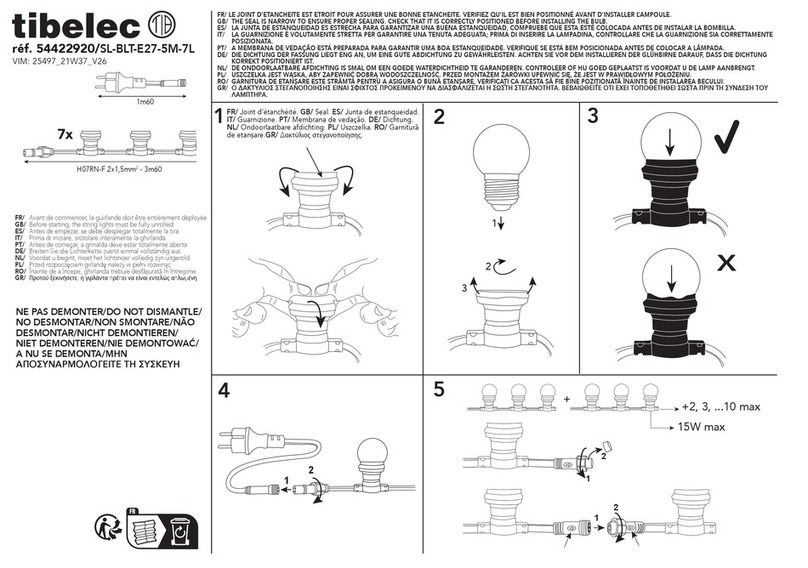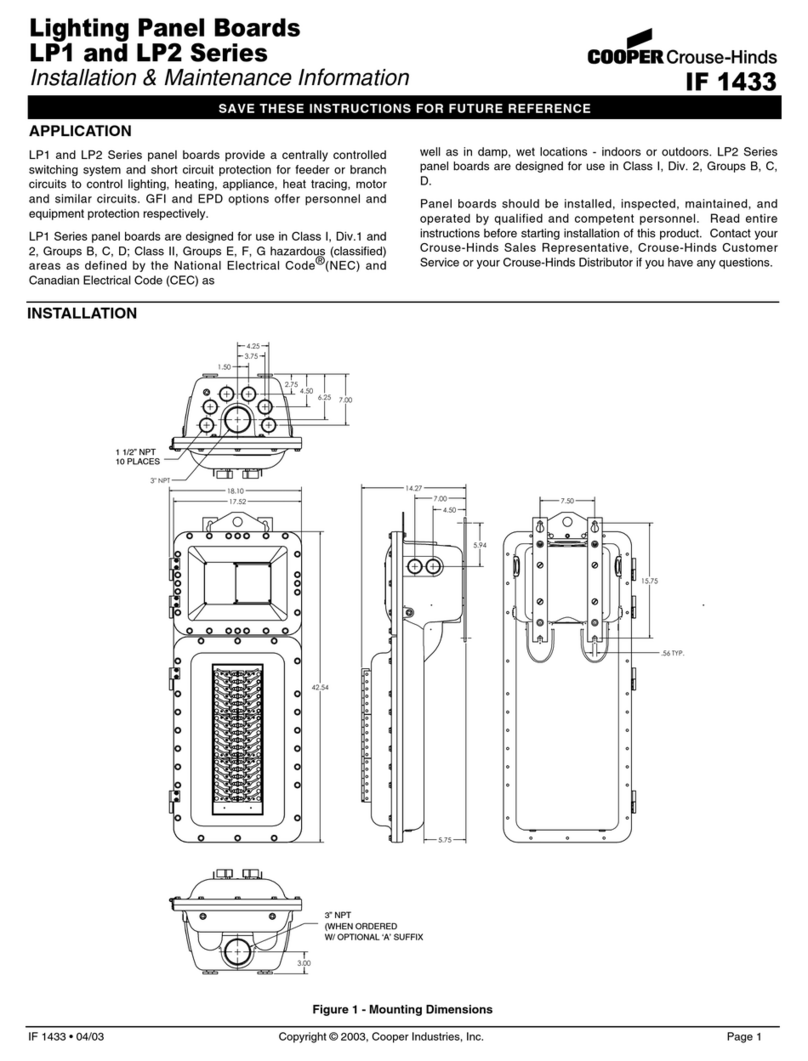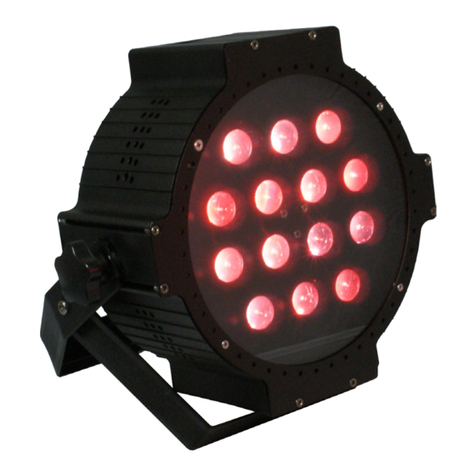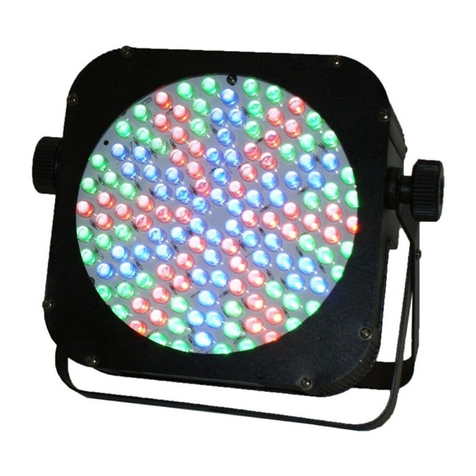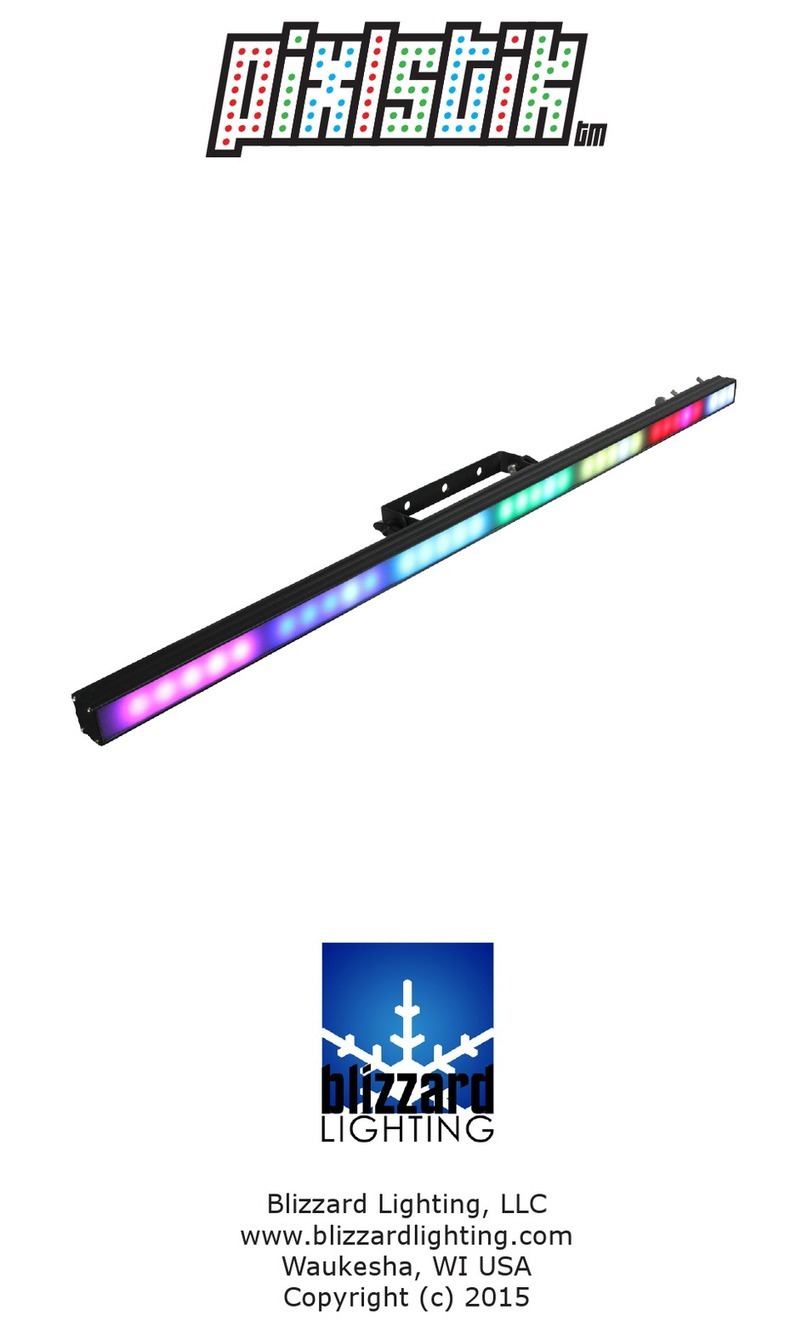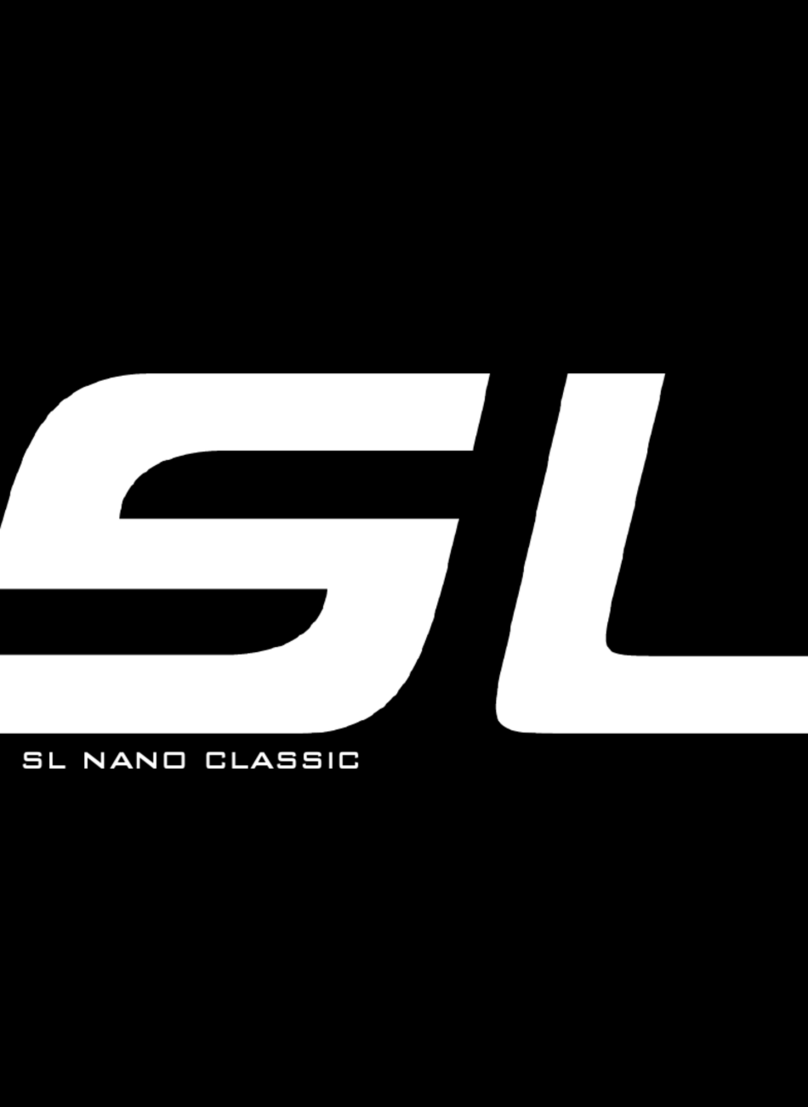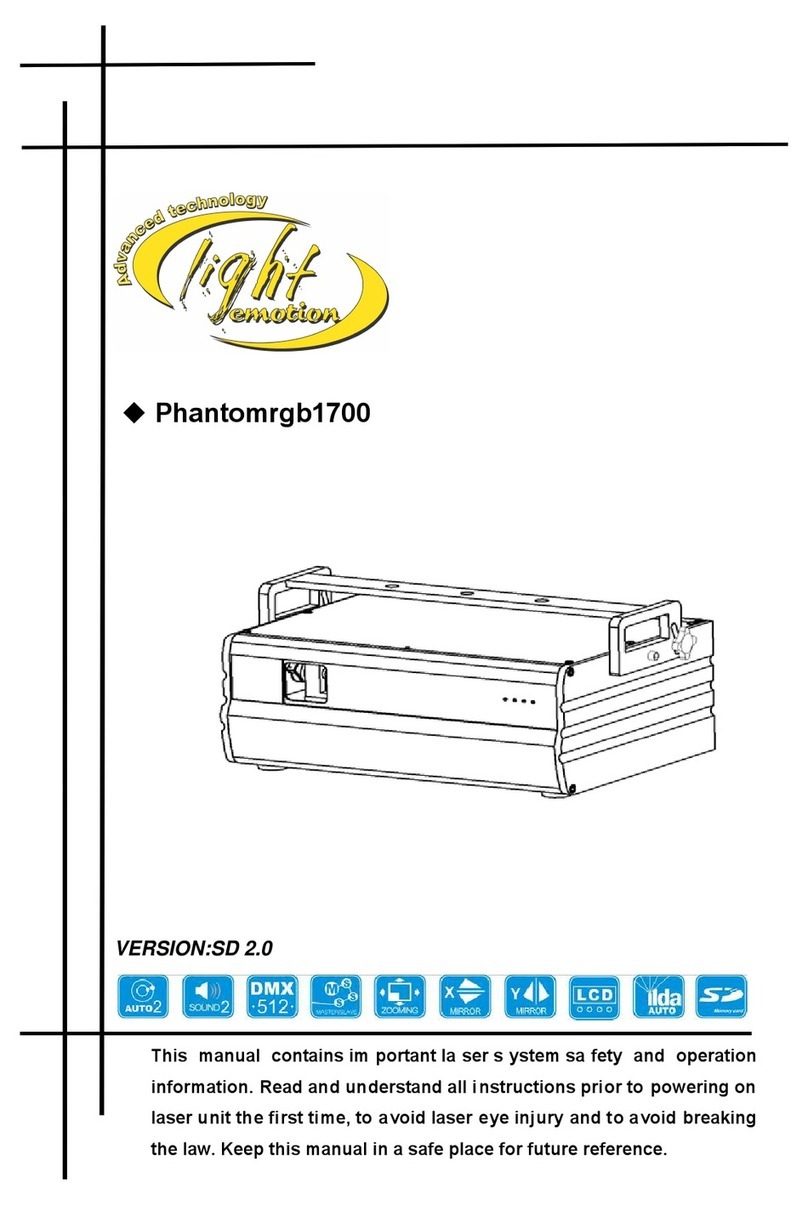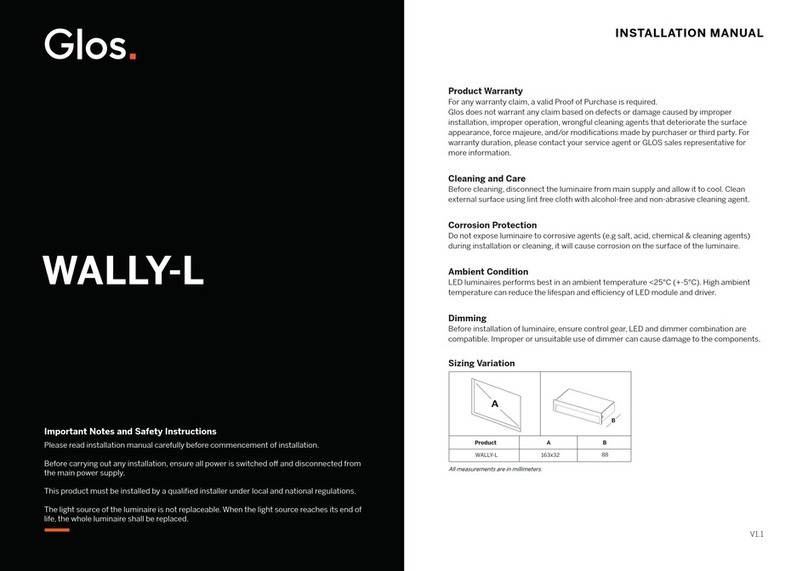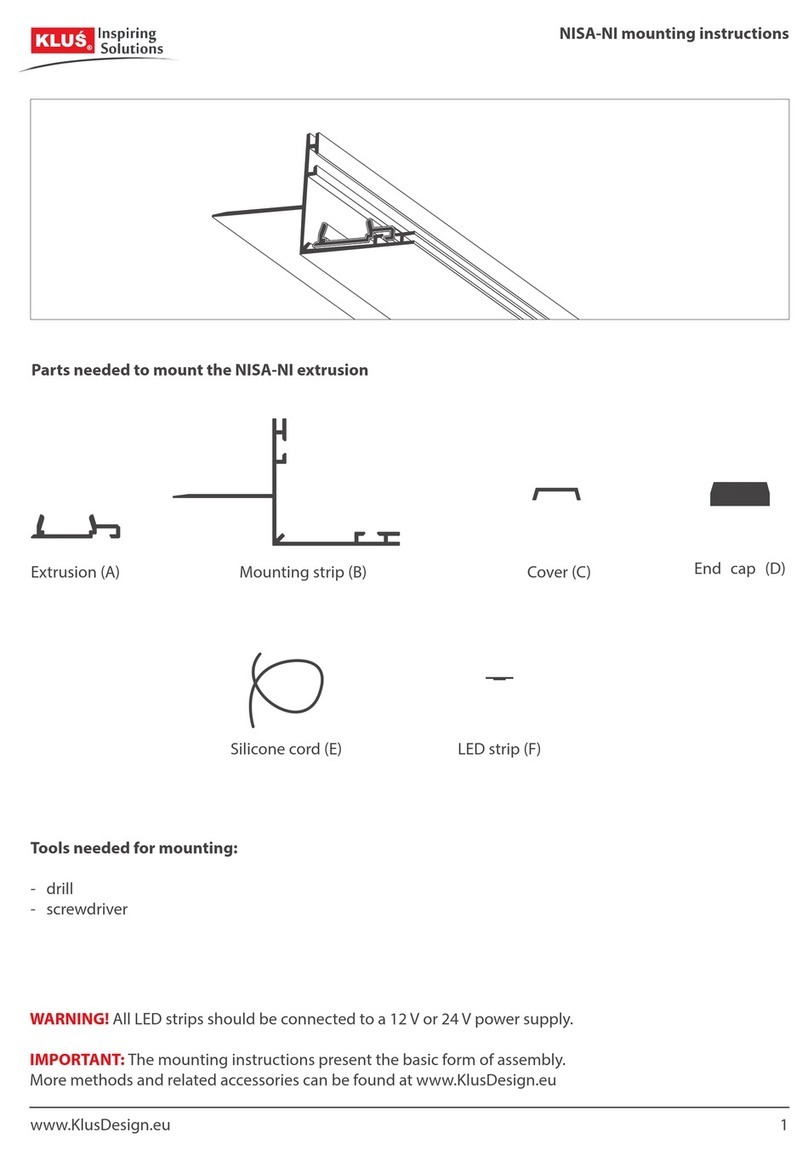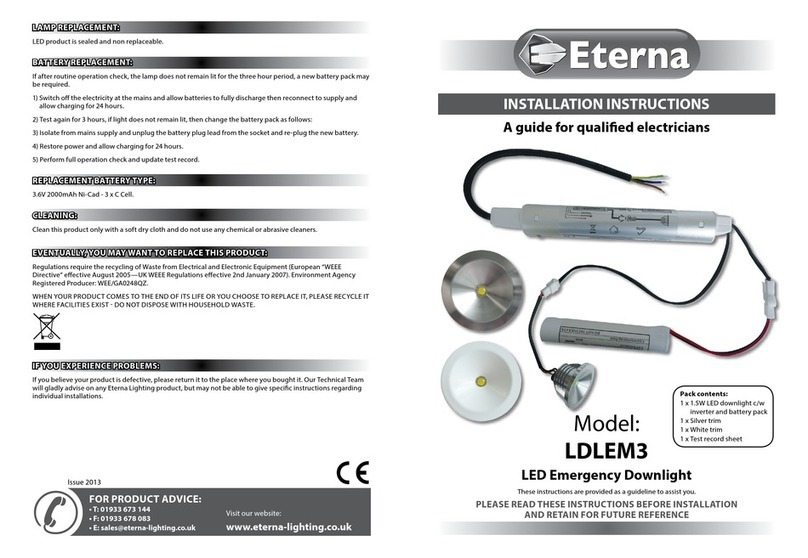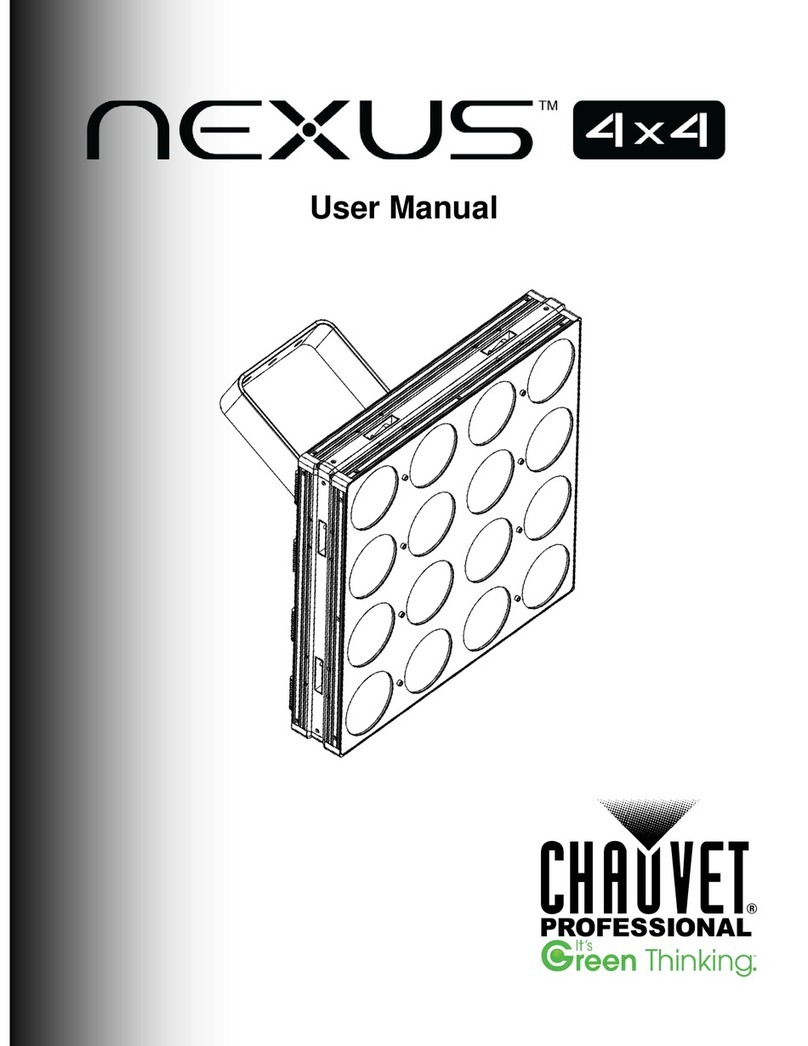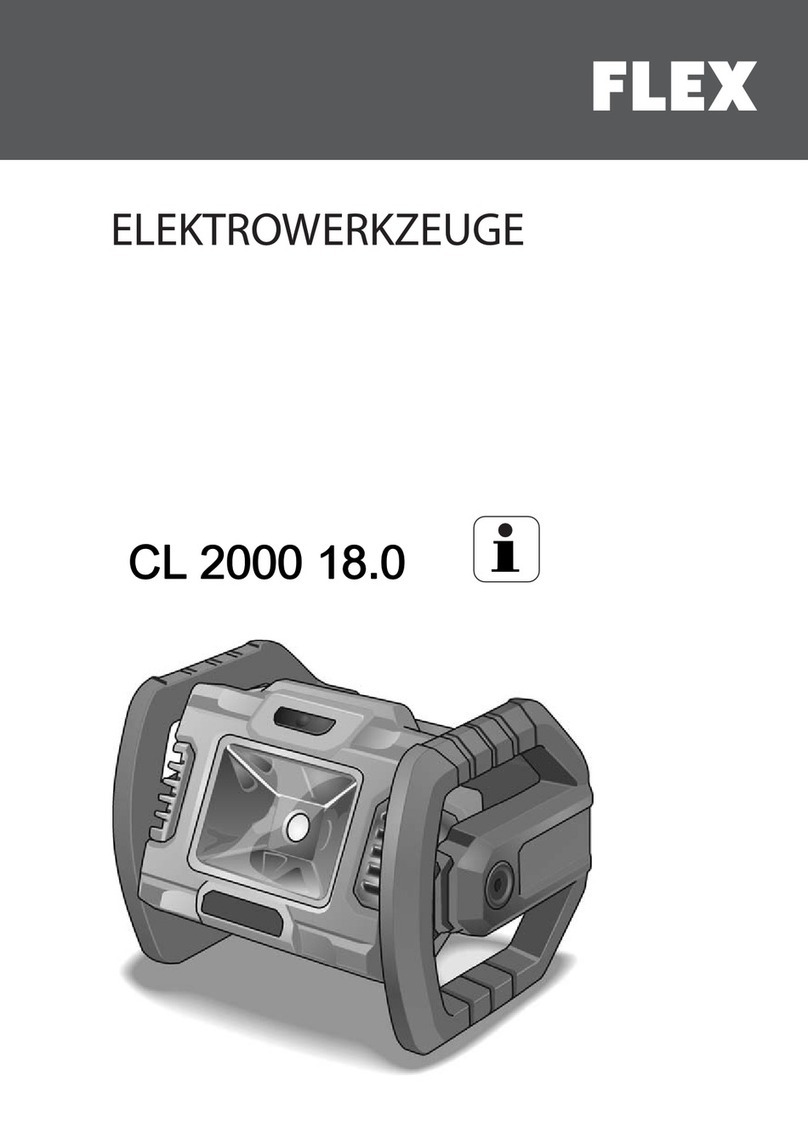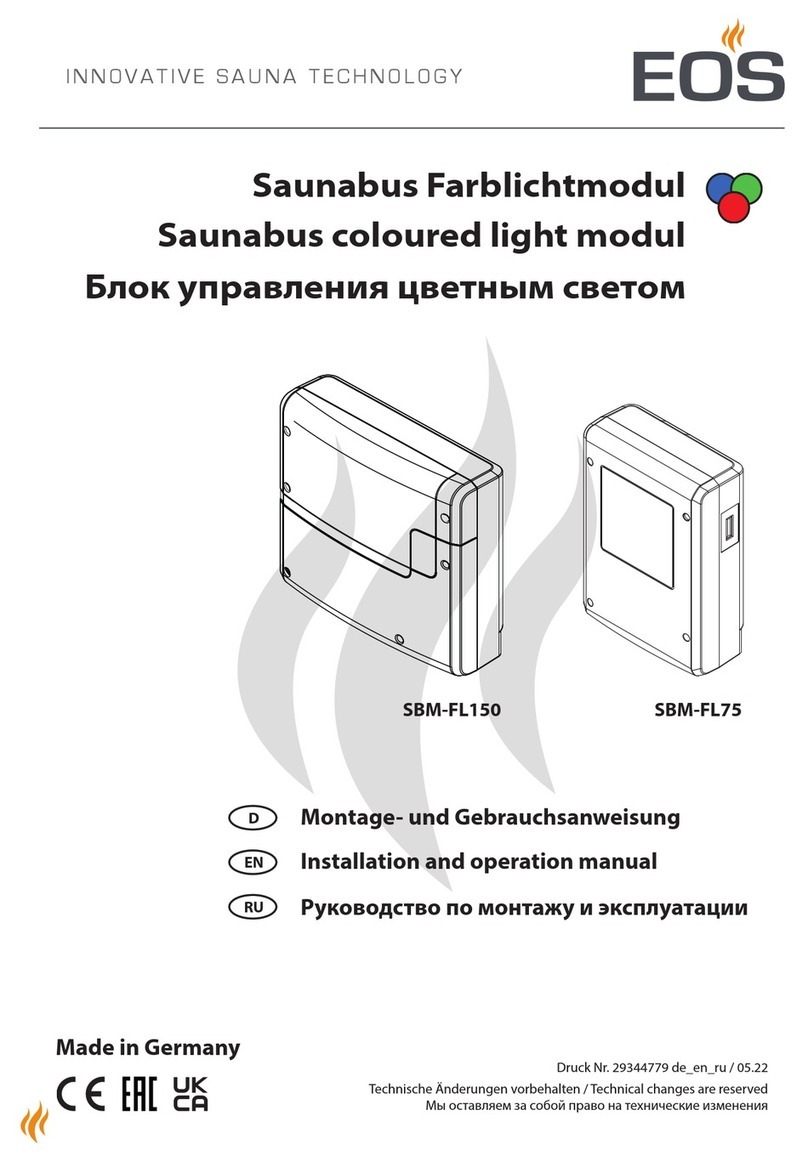
SNOKONTROL Manual Rev B.
Page 17
4. APPENDIX
4.1 A Quick Lesson On DMX
DMX (aka DMX-512) was created in 1986 by the United States Institute for Theatre Technology
(USITT) as a standardized method for connecting lighting consoles to lighting dimmer modules.
Itwasrevisedin1990andagainin2000toallowmoreexibility.TheEntertainmentServices
and Technology Association (ESTA) has since assumed control over the DMX512 standard. It has
alsobeenapprovedandrecognizedforANSIstandardclassication.
DMX covers (and is an abbreviation for) Digital MultipleXed signals. It is the most common com-
munications standard used by lighting and related stage equipment.
DMX provides up to 512 control “channels” per data link. Each of these channels was originally
intended to control lamp dimmer levels. You can think of it as 512 faders on a lighting console,
connected to 512 light bulbs. Each slider’s position is sent over the data link as an 8-bit number
having a value between 0 and 255. The value 0 corresponds to the light bulb being completely
off while 255 corresponds to the light bulb being fully on.
DMX data is transmitted at 250,000 bits per second using the RS-485 transmission standard
over two wires. As with microphone cables, a grounded cable shield is used to prevent interfer-
ence with other signals.
TherearevepinsonaDMXconnector:awireforground(cableshield),twowiresfor“Primary”
communication which goes from a DMX source to a DMX receiver, and two wires for a “Second-
ary” communication which goes from a DMX receiver back to a DMX source. Generally, the “Sec-
ondary”channelisnotusedsodataowsonlyfromsourcestoreceivers.Hence,mostofus
are most familiar with DMX-512 as being employer over typical 3-pin “mic cables,” although this
doesnotconformtothedenedstandard.
DMXisconnectedusingadaisy-chaincongurationwherethesourceconnectstotheinputof
therstdevice,theoutputoftherstdeviceconnectstotheinputofthenextdevice,andsoon.
The standard allows for up to 32 devices on a single DMX link.
Each receiving device typically has a means for setting the “starting channel number” that it will
respondto.Forexample,iftwo6-channelxturesareused,therstxturemightbesettostart
atchannel1soitwouldrespondtoDMXchannels1through6,andthenextxturewouldbeset
to start at channel 7 so it would respond to channels 7 through 12.
The greatest strength of the DMX communications protocol is that it is very simple and robust.
It involves transmitting a reset condition (indicating the start of a new “packet”), a start code,
and up to 512 bytes of data. Data packets are transmitted continuously. As soon as one packet
isnished,anothercanbeginwithnodelayifdesired(usuallyanotherfollowswithin1ms).If
nothing is changing (i.e. no lamp levels change) the same data will be sent out over and over
again.ThisisagreatfeatureofDMX--ifforsomereasonthedataisnotinterpretedtherst
time around, it will be re-sent shortly.
Notall512channelsneedtobeoutputperpacket,andinfact,itisveryuncommontondall
512 used. The fewer channels are used, the higher the “refresh” rate. It is possible to get DMX
refreshes at around 1000 times per second if only 24 channels are being transmitted. If all 512
channels are being transmitted, the refresh rate is around 44 times per second.
DMXhasbecomethestandardforlightingcontrol.Itisexible,robust,andscalable,andits
ability to control everything from dimmer packs to moving lights to foggers to lasers makes it an
indispensible tool for any lighting designer or lighting performer.




















